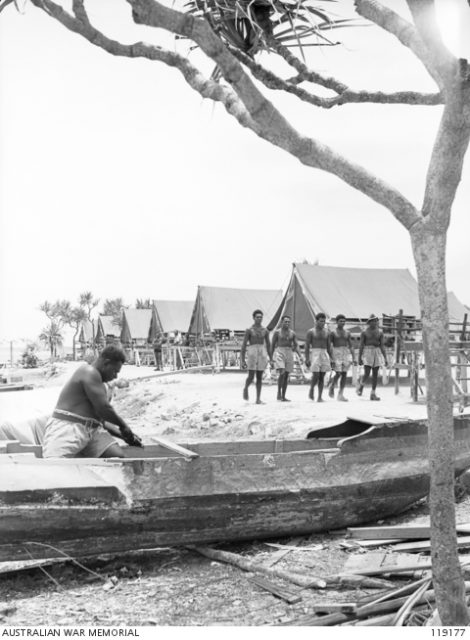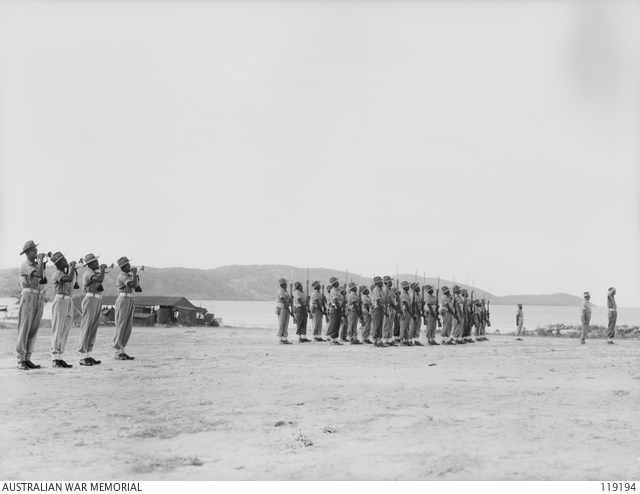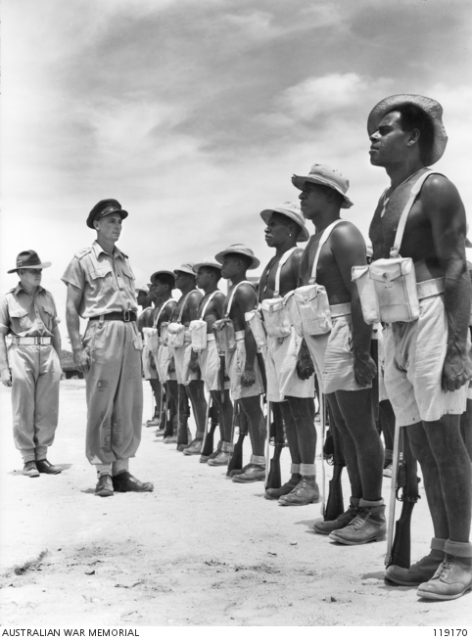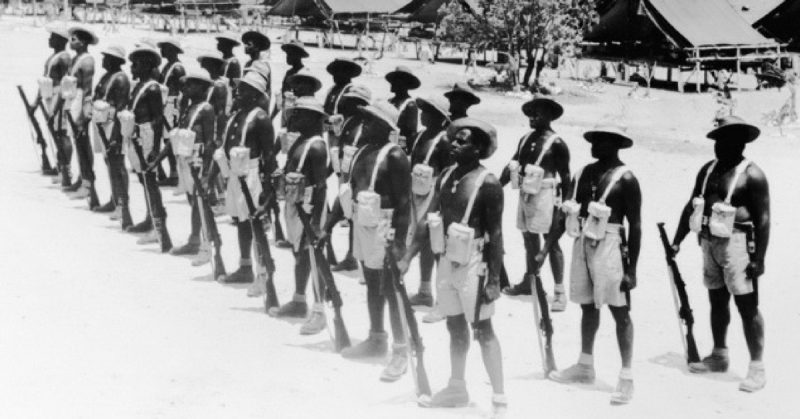The indigenous tribes of the Torres Strait Islands in Australia were not recognized as citizens of Australia in the 1940s. Still, when the Japanese attacked, every man fit to serve came to the aid of the country to prevent the oncoming invasion.
The Torres Strait Light Infantry Battalion (TSLIB) was the only all indigenous Australian army unit. It was formed in 1943 to defend against the encroaching Japanese army which was attacking the northern coast of Australia.
The Torres Strait Islands are a string of islands that stretch from the coast of Queensland in northern Australia to the southern part of Papua New Guinea.
Around 880 men enlisted out of an estimated 890 able-bodied male indigenous tribe members in the Torres Strait Islands.
On March 17, 2018, Australia’s Chief of Army Lt. Gen. Angus Campbell spoke at a ceremony honoring the 75th anniversary of the founding of the TSLIB. He said that they had the highest rate of volunteerism per capita of the entire country in World War II.

The entire population of the islands was only about 4,000 people. The exact numbers are not known as the indigenous population was not included in the census of the time.
There are only three of those volunteers still alive today. Campbell stated that it was important to honor the sacrifices they made saying that the country owed a debt of “gratitude and acknowledgment” for what they gave in aid to their country.
On April 25th every year, the Australians celebrate Anzac Day. It is a day to remember the service of their military veterans – including the indigenous people that have fought for Australia in every war since the Boer War.
Originally, the day was intended to honor those who served in the Australian and New Zealand Army Corps (ANZAC) during the Gallipoli campaign in World War I. It has since grown to include all “diggers,” the Australian word for their army troops.
The “black diggers” is the name given to the soldiers from Australia’s aboriginal tribes and the islands of the Torres Strait. These men fought for Australia but did not receive the same privileges as Australian citizens that served in the same wars.

Black diggers earned half as much in pay as their white counterparts. They almost never received service medals and were rarely promoted to senior ranks. They were not given the war pensions or land grants that were given to white soldiers. They were frequently refused entry to the Returned Servicemen Leagues (RSL) which served as social clubs for veterans back from war.
In the 1980s, a successful lobbying effort saw members of the TSLIB receive back pay for the earnings they had not received during the war. In 2001, they were finally awarded the service medals they had earned.
The Minister for Veterans Affairs, Darren Chester said that the country had not been good about respecting its “First Peoples” but said that they were improving.
He said that, as a child, he had never been taught about the TSLIB and that “concerns him greatly.”
On March 14, 1942, the Japanese began their attacks in the Torres Strait by bombing Horn Island, just off the coast of Australia.

Vanessa Seekee is a local historian who studied the TSLIB. She says that Horn Island was the location of the northernmost airfield for Australia’s air force. It was a strategically important location for the Allies in the Pacific. Over the next two years, Horn Island would be the second most bombed location in Australia. Add to this the constant dogfights in the air and the Japanese submarines operating below the sea’s surface, and it becomes clear why the islanders were eager to enlist and protect their homes.
Originally trained as infantrymen, the “Island Diggers” proved capable in a variety of roles and were soon working as shipwrights, boot makers, carpenters, plumbers, signalers, and gunners.
The surviving men of the TSLIB spoke at the ceremony, and they made it clear that the women of the islands should be honored as well. Losing almost all the able-bodied men to the war effort meant the entire island chain depended on the strength and leadership of the women who served selflessly at home while the men were away.
The TSLIB disbanded in 1946, but their impact is still felt in the Australian military. Thursday Island is home to the Far North Queensland Regiment’s 51st Battalion Charlie Company’s barracks. A large percentage of that company consists of native islanders.
During the 75th anniversary ceremony, the barracks was officially renamed “Sarpeye Barracks.”
The term sarpeye is an island term for “sharp eyes.” The soldiers of the TSLIB were always known for their skill in surveillance with their sharp eyes and ears.
